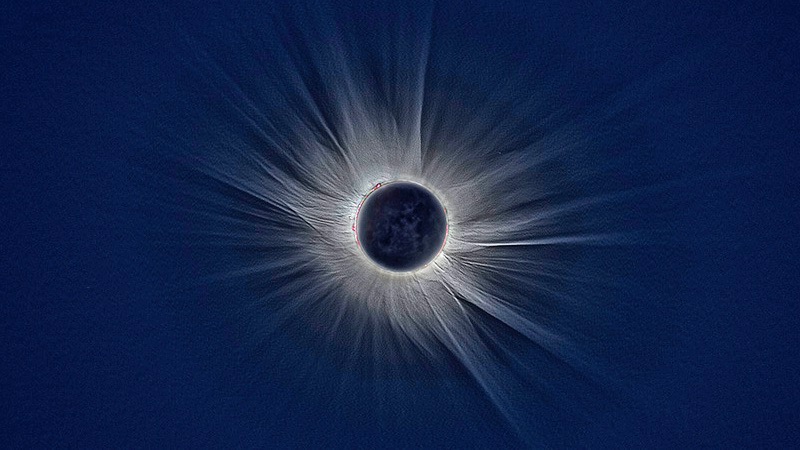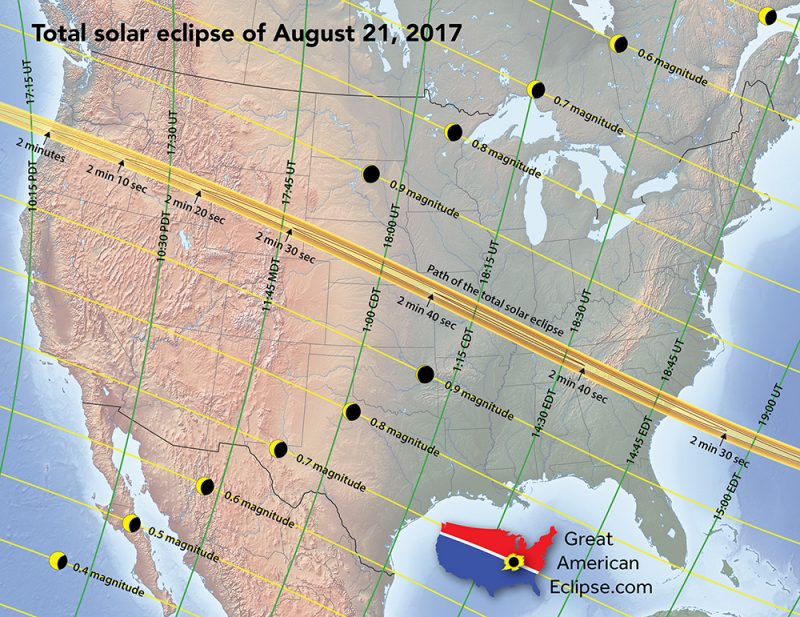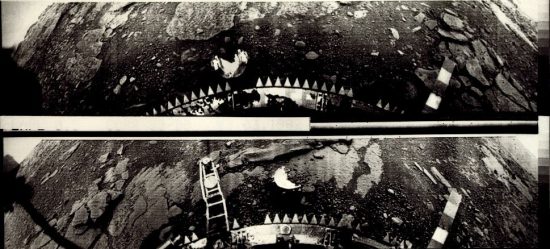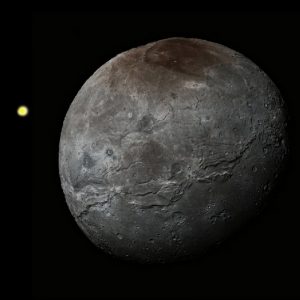
You might have heard that the Earth is the only planet in our solar system that experiences eclipses. That is not true. Granted, our eclipses are special, but hypothetical observers on other planets also could experience partial and total solar eclipses. Follow the links below to learn more about eclipses on other planets, and to learn why Earth’s eclipses are unique.
Jupiter, Saturn, Uranus, Neptune, Pluto
Why Earth eclipses are special
Transits: A special kind of eclipse

Venus and Mercury. Generally speaking, an eclipse occurs when one astronomical body (such as a moon) passes in front of another (such as our sun). Mercury and Venus, having no moons at all, never have eclipses of any kind.
Observers on the searing hot surface of Venus, would never directly experience an eclipse even if the planet had a moon, simply because it is constantly enveloped by thick clouds.
The images below are from the Soviet Venera 13 lander, which landed on the surface of Venus on March 3, 1982. The perpetually cloud covered sky can be seen in the triangular wedged at the upper corners of each photo:

Mars. Martians, if they existed, would occasionally experience transits by the planet’s moons Deimos and Phobos.
Transits occur when the nearer body appears too small to cover the farther body. During these events, the nearer body (for example, a moon of Mars) would appear through appropriately filtered, large-enough telescopes as black dots moving in front of the farther body (in this case, the sun).
A transit of a moon of Mars is essentially a partial eclipse. It can be geometrically equivalent to an annular solar eclipses seen on Earth. During an annular eclipse, the moon is in a far part of its orbit and appears too far from Earth to cover the sun completely, even when the moon passes directly in front of the sun.
The moons of Mars – Phobos and Deimos – are always too small and too far from the planet for anything but transits (partial eclipses).

Jupiter, Saturn, Uranus, Neptune, Pluto. Elsewhere in the solar system, observers floating at cloud-top level on Jupiter, Saturn, Uranus or Neptune could experience eclipses by the various moons of those worlds. Even far-off Plutonians would, on quite rare occasions, see a moon pass in front of the sun from their distant dwarf world.
From Pluto, the sun is little more than an intensely bright star. In fact, it is only about the same size as the planet Jupiter as viewed from Earth. But Pluto’s large moon Charon appears from Pluto nearly four times as large as Earth’s moon from Earth. A solar eclipse from Pluto would be more like a lunar occultation of a star from Earth, an event where the moon covers the star.

Why Earth eclipses are special. So if solar eclipses are not exclusive to Earth, why are they so special?
Not to stress the obvious, but there are human observers on Earth to view eclipses, something no other planet in our solar system can boast. Aside from that, the main reason is that the sun and moon appear roughly the same size in the sky, allowing particularly impressive total solar eclipses. During totality of a solar eclipse, the silhouette of the moon leaves a gaping “black hole” in the sky, surrounded by the ghostly glow of the sun’s outer atmosphere, the corona.
This fortuitous circumstance happens because although the moon’s diameter is about 400 times smaller than the sun’s, it also is about 400 times closer. That makes the sun and moon to appear roughly the same size in the sky, about a half-degree. If the moon were 10% closer, as it was about a billion years ago*, it would always appear appreciatively larger than the sun, and some of the magic of today’s total solar eclipses would be lost.
If the moon were 10% farther away, as it will be roughly a billion years in the future*, it would appear too small to completely cover the sun’s disk, and we would never experience a total solar eclipse.
So while our eclipse experience on Earth today is virtually unrivaled anywhere in the solar system, it is simply a temporary coincidence.
The same moons that cause solar eclipses also can experience them as well, so there are literally dozens of places in our solar system where solar and lunar eclipses occur.

Transits: A special kind of eclipse. As mentioned above, there also is a special eclipse-relative called a transit, in which another planet is seen to pass in front of the sun. Mercurians could see no eclipses or transits, since it has no moon and there is no planet closer to the sun.
Observers on Venus would have no moon to cause an eclipse, and while orbital geometry allows for transits of Mercury, none can be seen from the surface because of the thick, obscuring clouds.
Earth observers can view transits of both Mercury and Venus, the last being a transit of Venus on June 5, 2012.
Lucky Martian observers can seen transits of Mercury, Venus and Earth. Arthur C. Clarke, famed science/science fiction writer, even wrote a short story called Transit of Earth – about the Earth crossing the solar disk as viewed from Mars on May 11, 1984. Although the story is fictional, and there were no human observers on Mars at the time, a transit of Earth from Mars actually occurred on that date. Mars Curiosity Rover’s robotic eyes observed a transit of Mercury in 2014, the first time ever that an transit has been “observed” from a planet other than Earth.
Similar transit events can be seen from all the outer planets and moons, although increasing distance from the sun makes them more rare.
While eclipses and transits can occur almost everywhere in the solar system (Except from poor Mercury), the unique circumstances we have in the Earth-Moon system provides the most spectacular examples.

Bottom line: Other planets and moons undergo eclipses and transits, but Earth’s eclipses are special because the sun and our moon can appear the same size in our sky.
*Note: these are simplistic estimations based on the moon’s current recession rate from Earth. These can be taken only rough approximations because the rate varies over time.











